Abstract
A “complete” and quantitative kinetic model for the states and transitions of the barnacle visual pigment in situ has been constructed from intracellular recordings of the early receptor potential responses to long light pulses. The model involves two stable and four thermolabile states and 10 photochemical, thermal, and metabolic transitions among them. The existence of each state and transition is demonstrated by qualitative examination of the response resulting from a carefully chosen experimental paradigm (combination of intensity, duration, and wavelength of adaptation and stimulation). Quantitative examination of the same responses determines all of the model transition rates, but only puts constraints on the state dipole moments. The latter are determined, and the former refined, by quantitative comparison of the predictions of the complete model with the responses to a set of paradigms chosen to involve as many states and transitions as possible. The fact that good fits can be obtained to these responses without further modification of the model supports its completeness.
Full text
PDF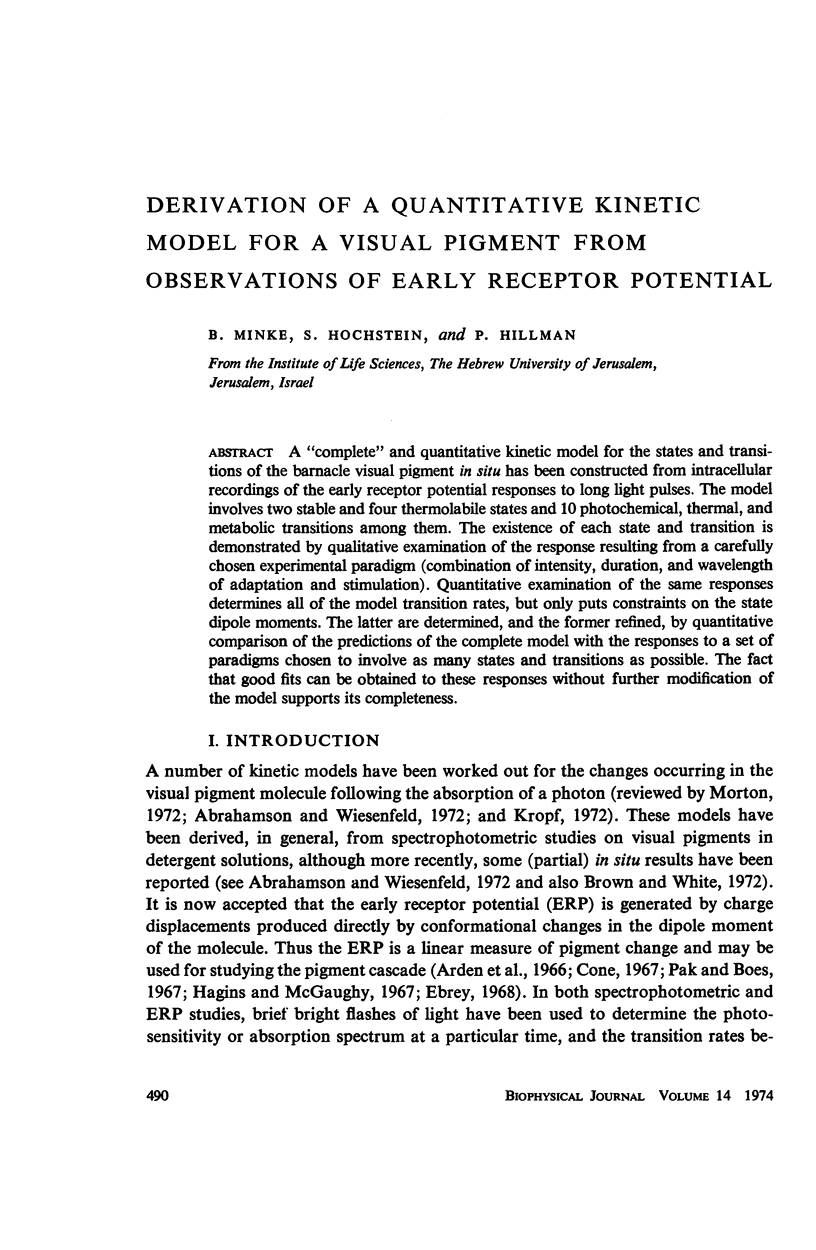

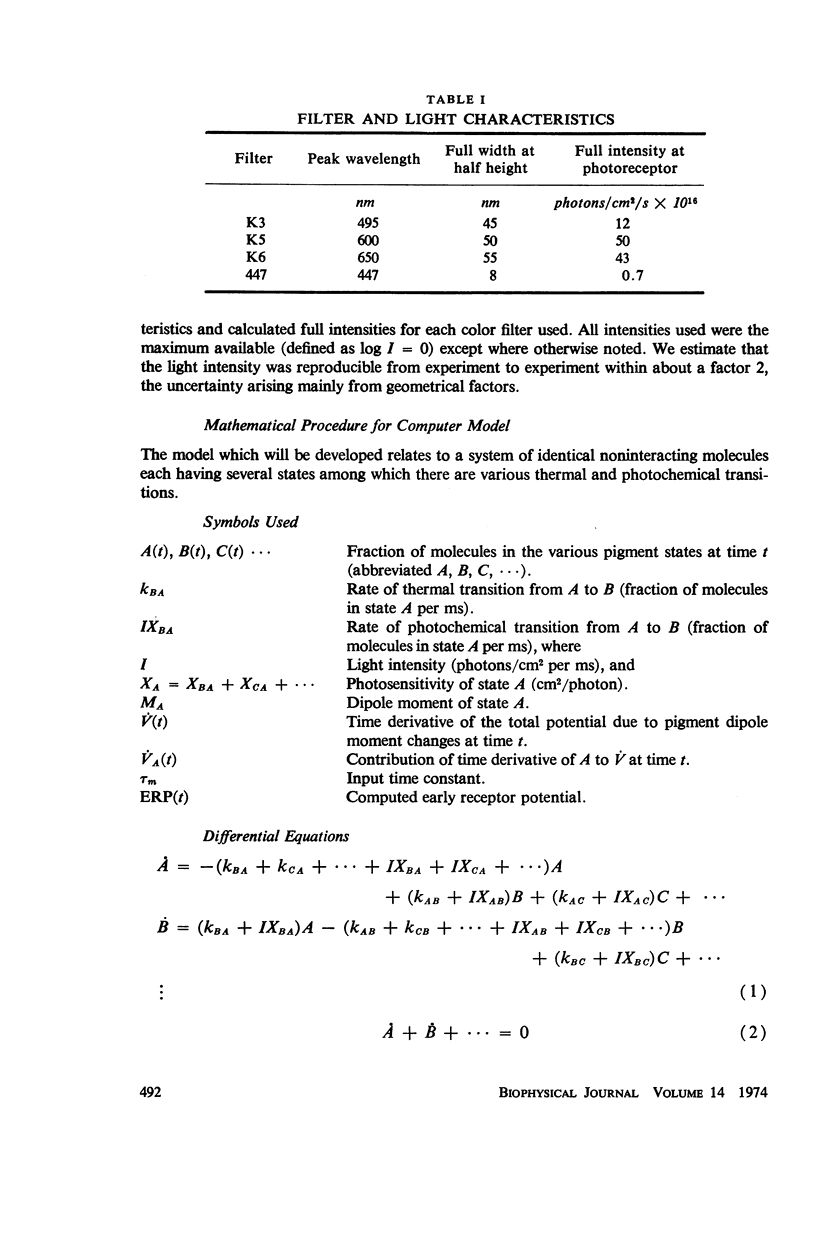
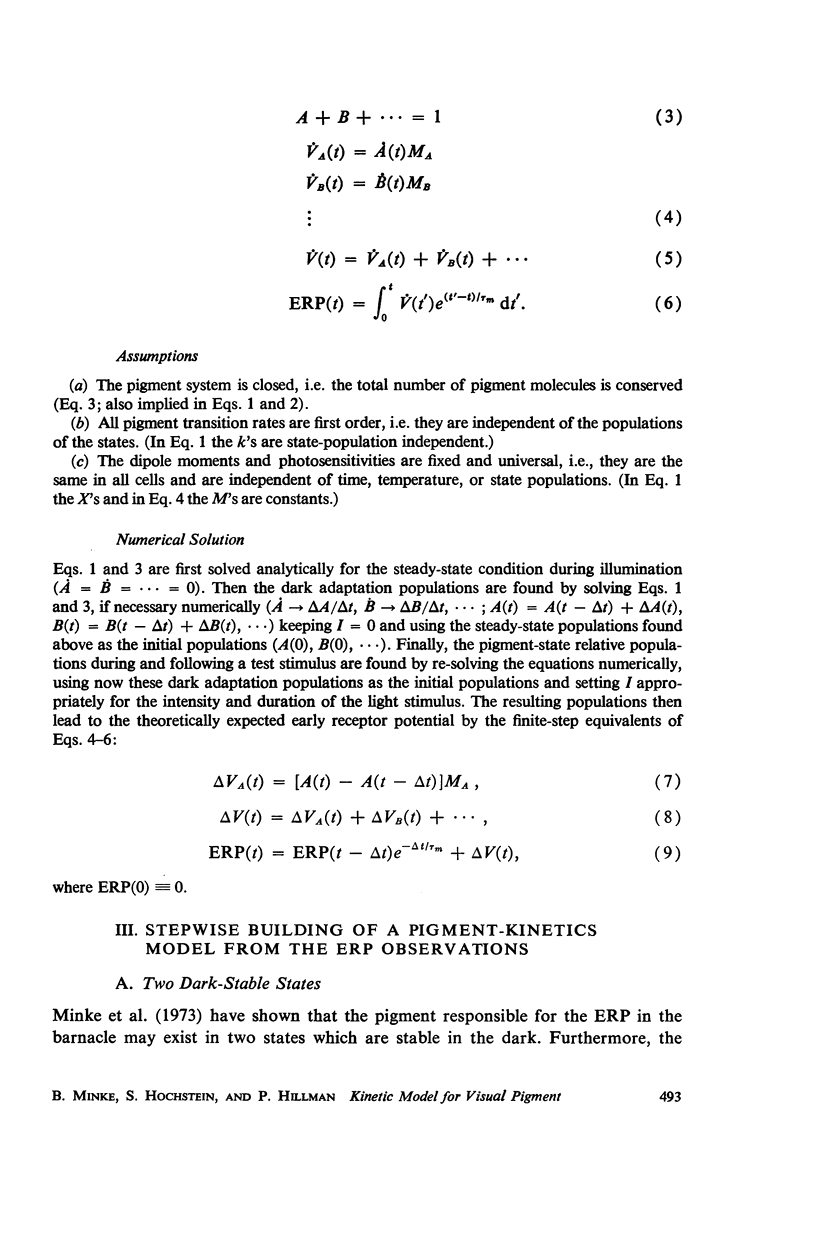
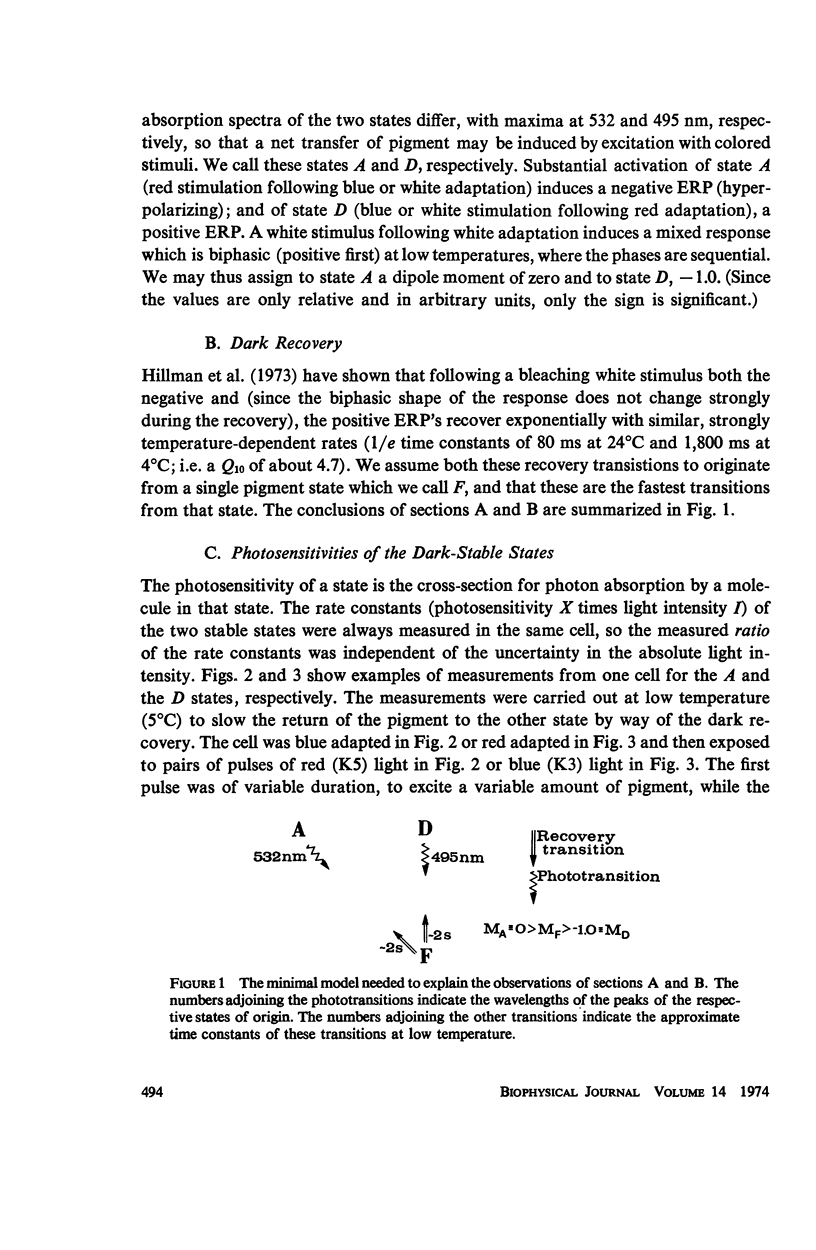
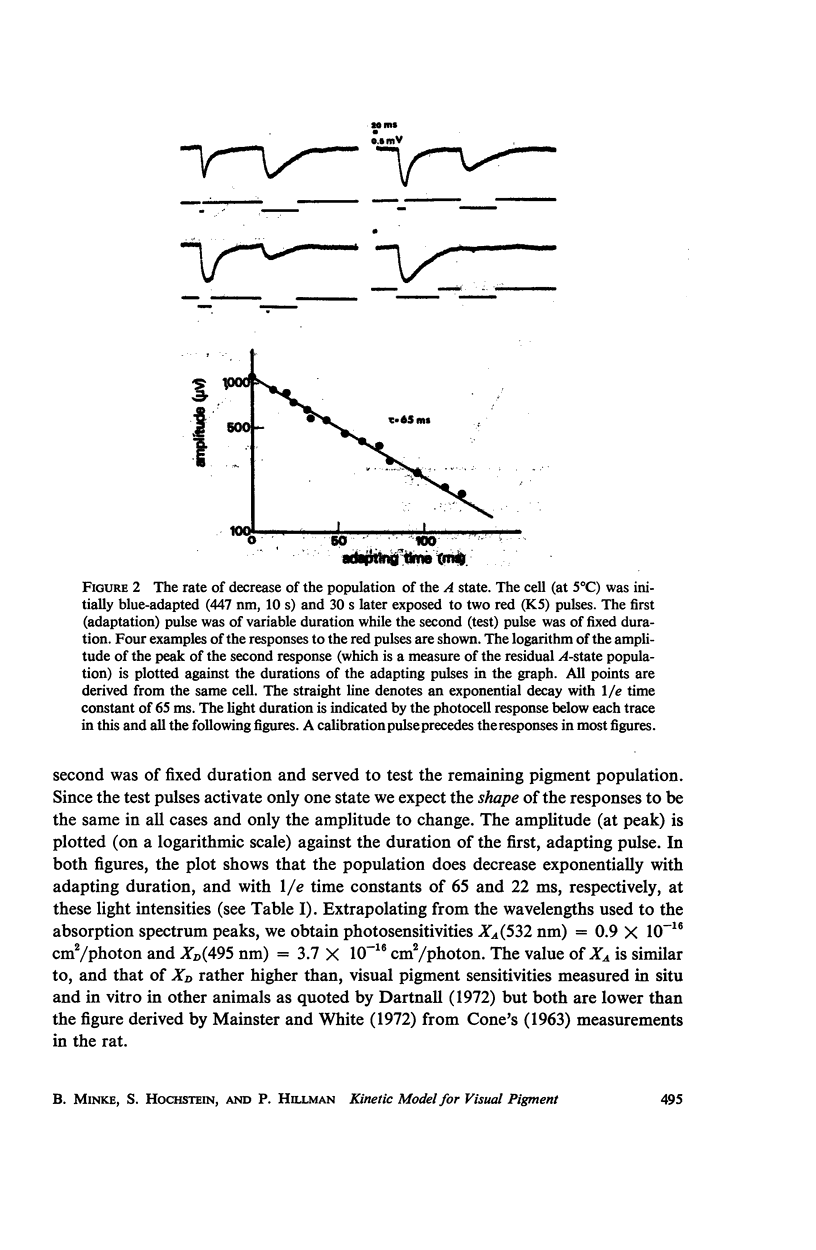
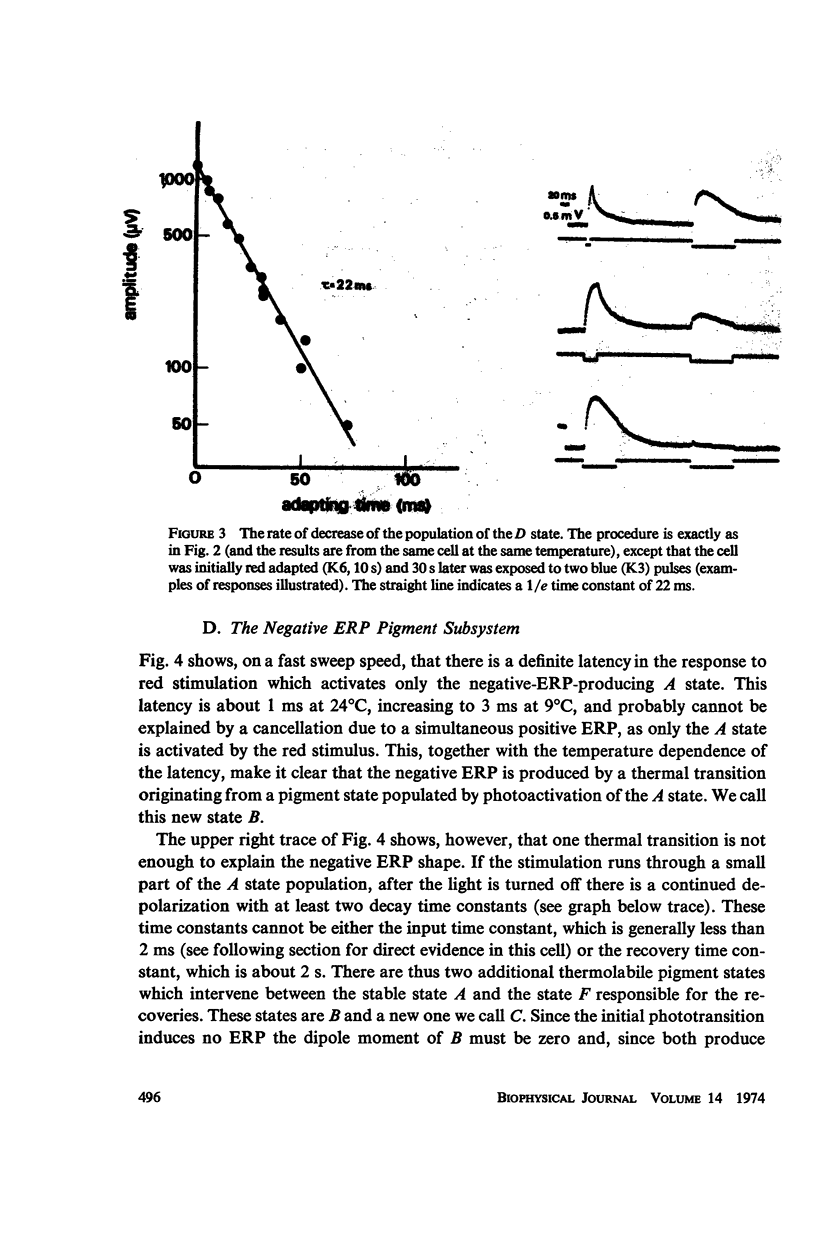
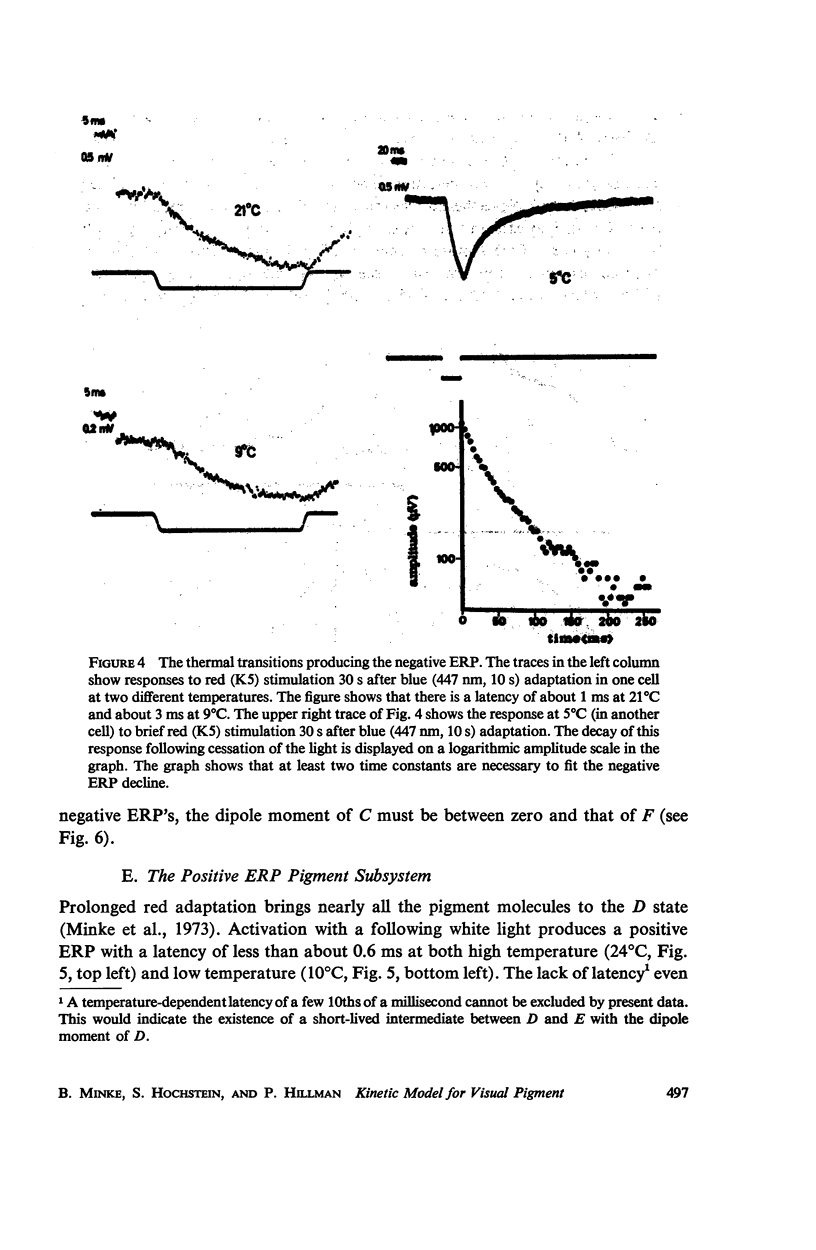

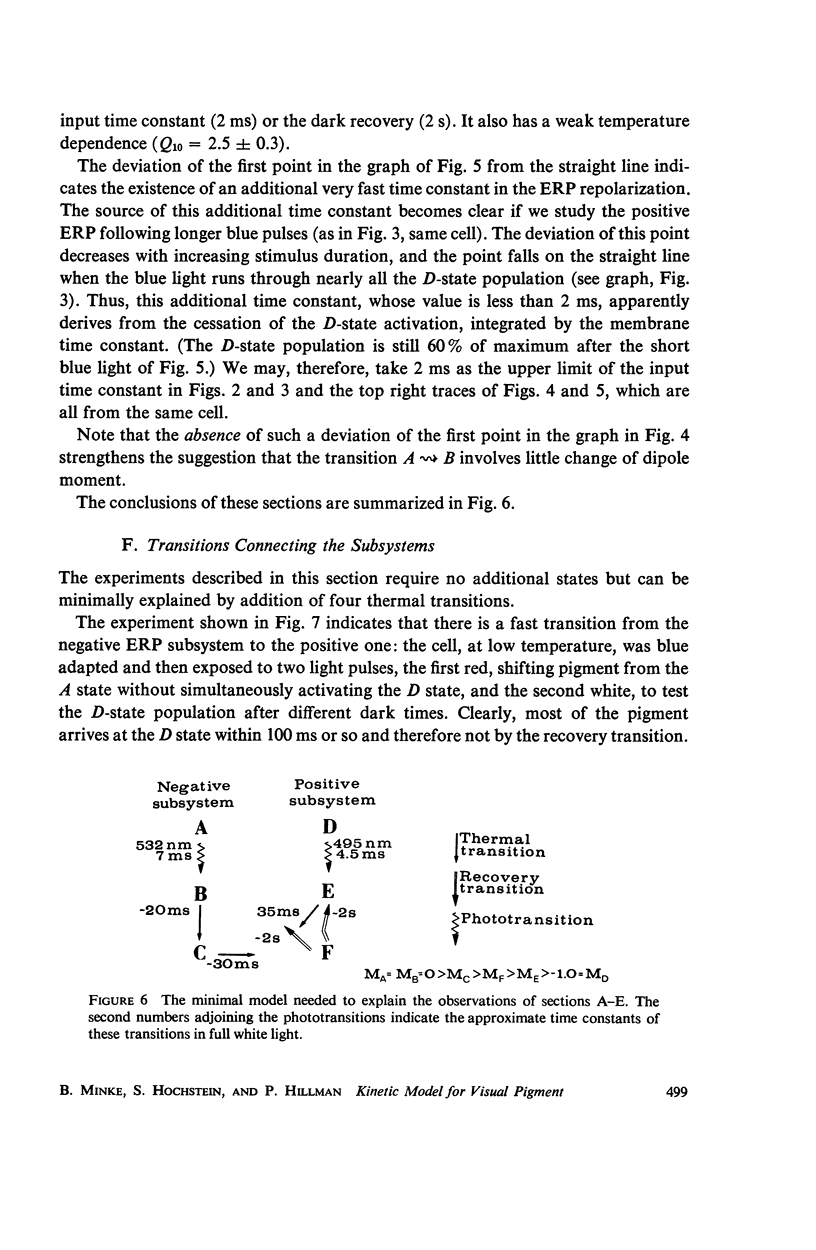
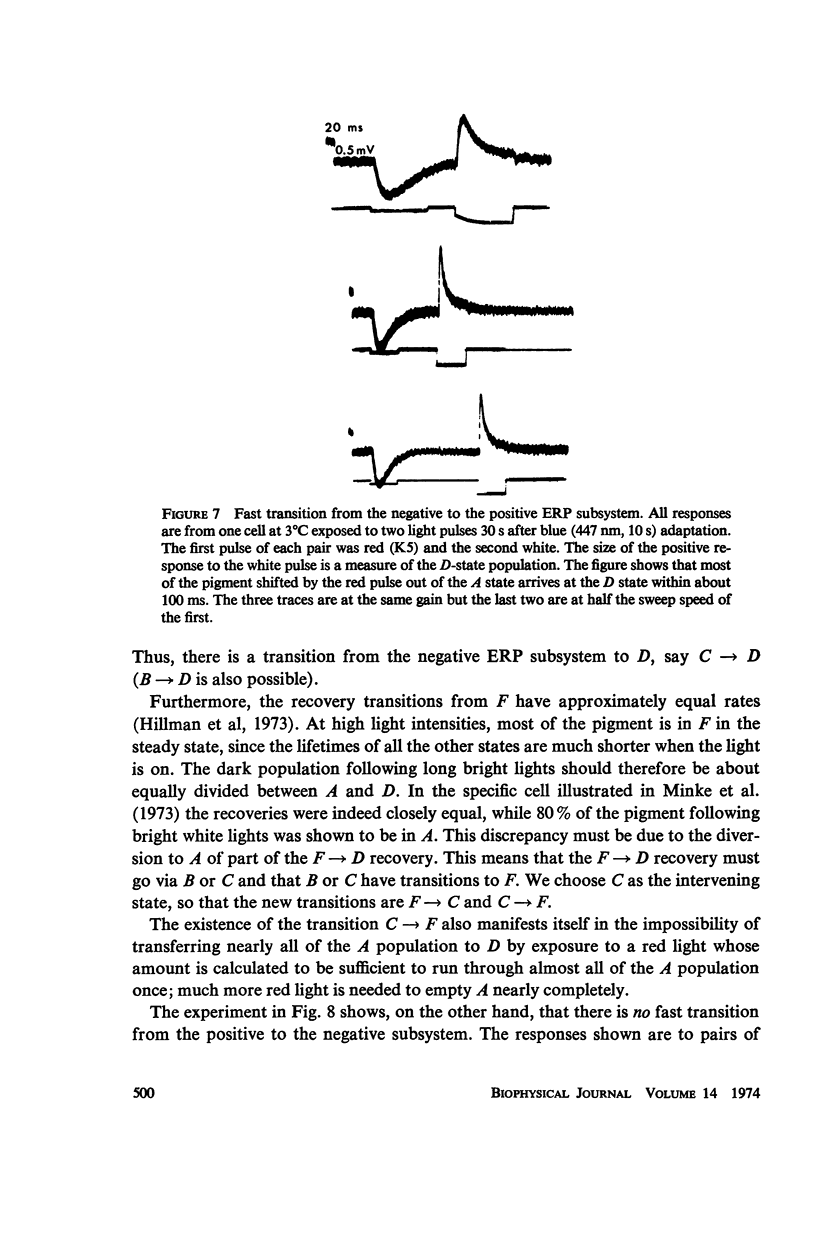
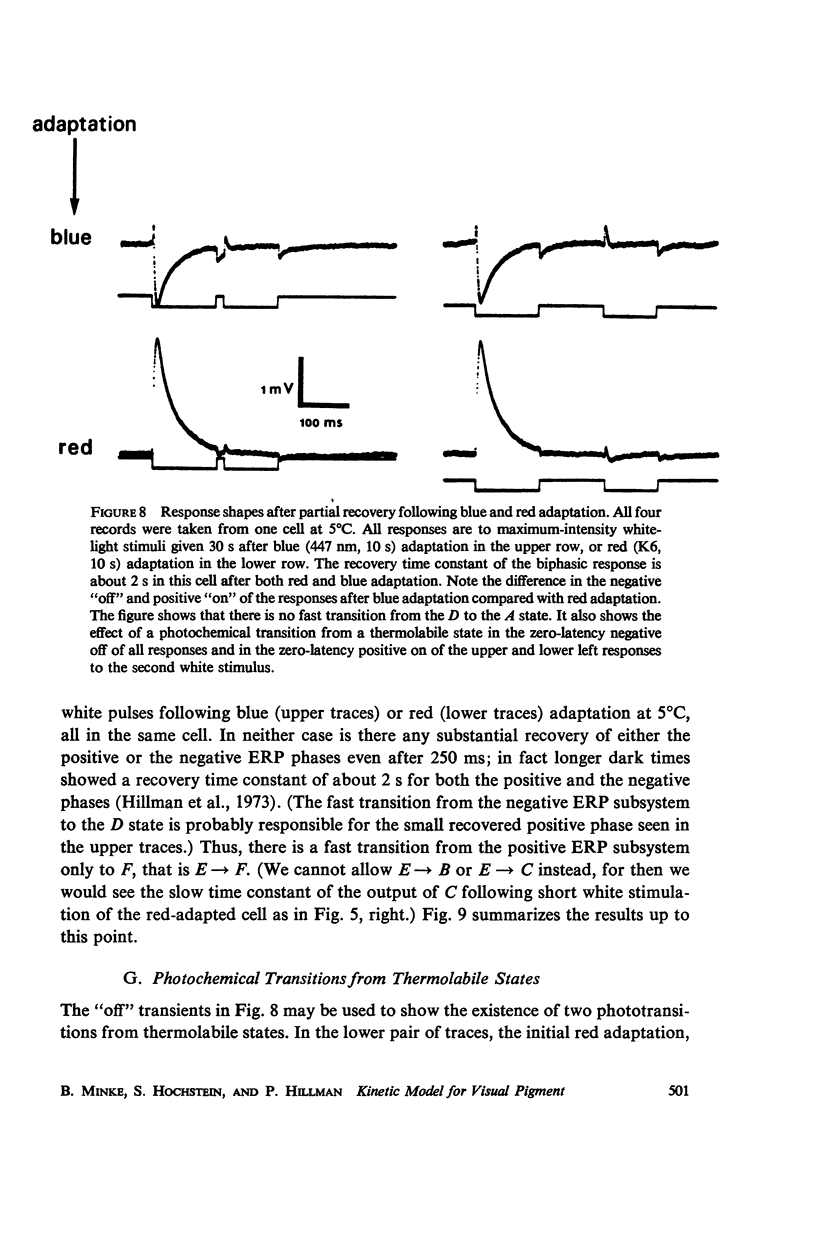
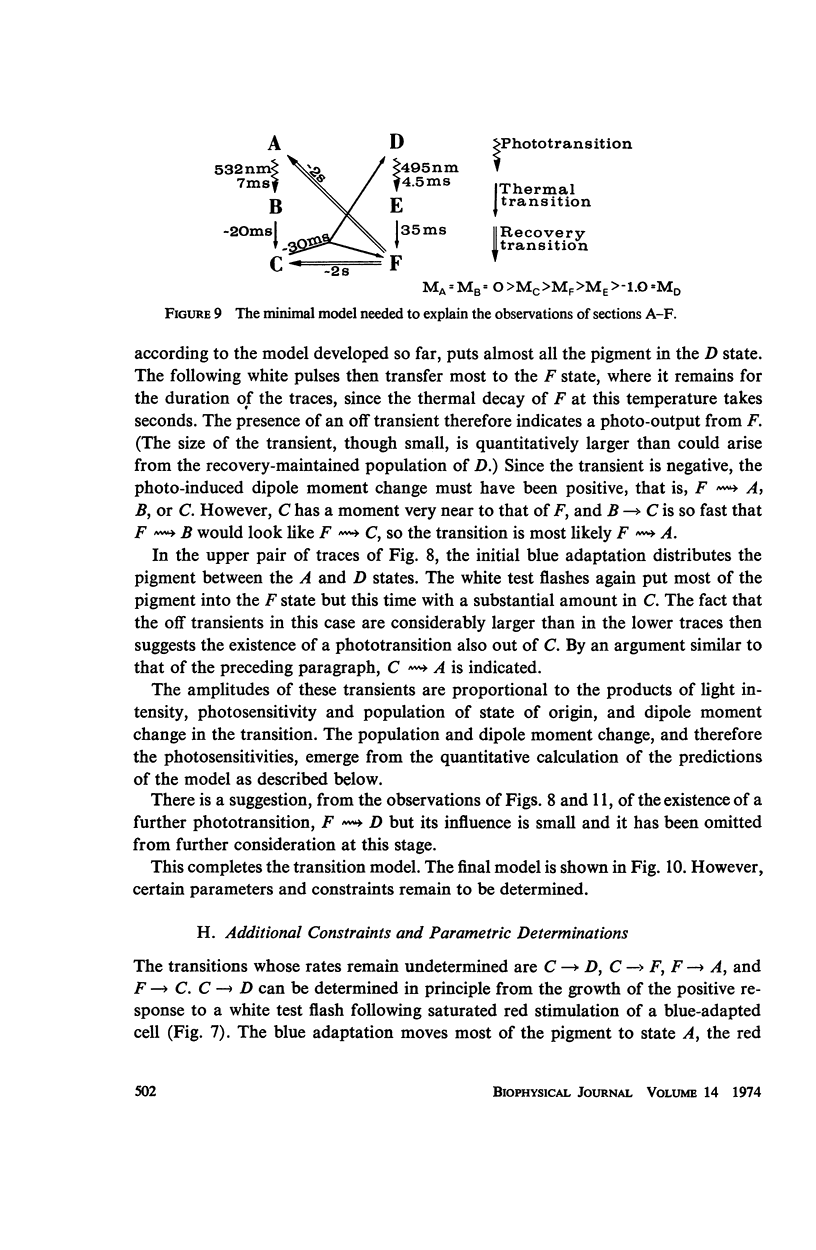
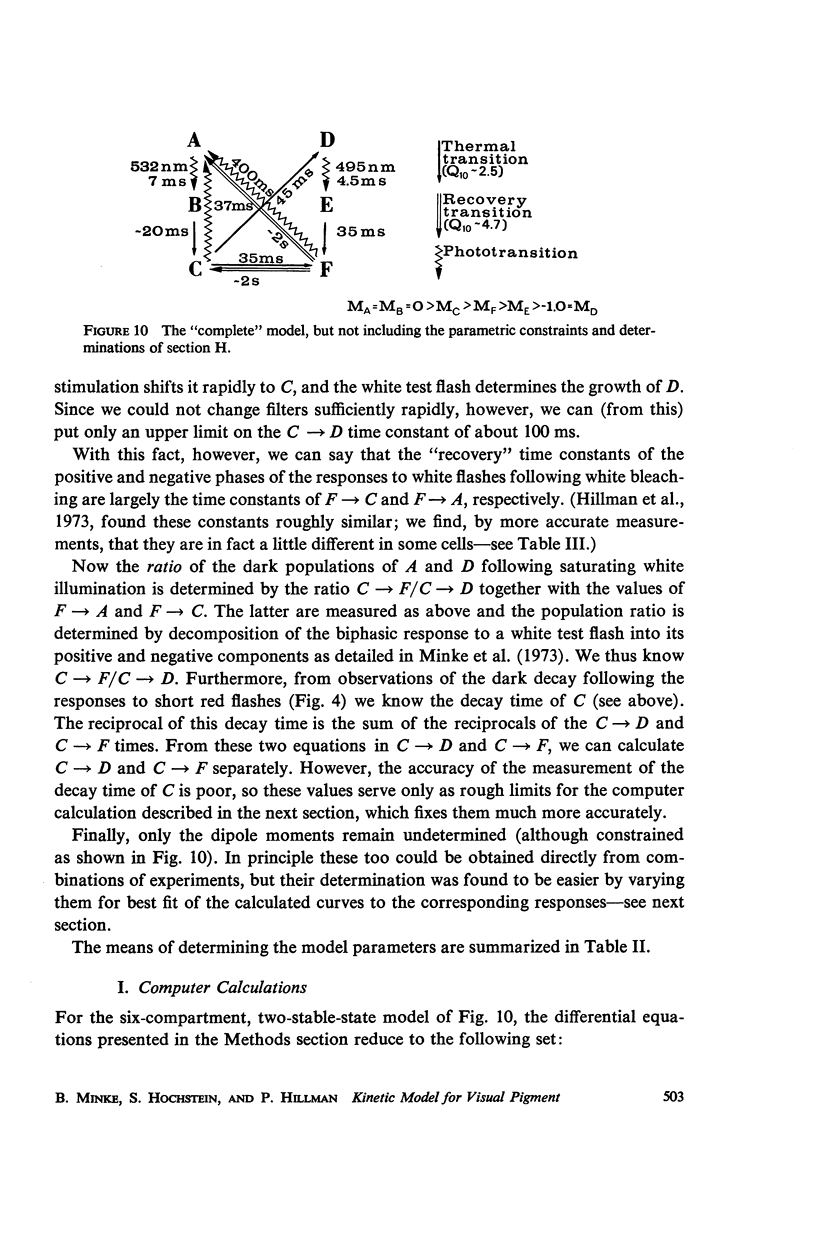
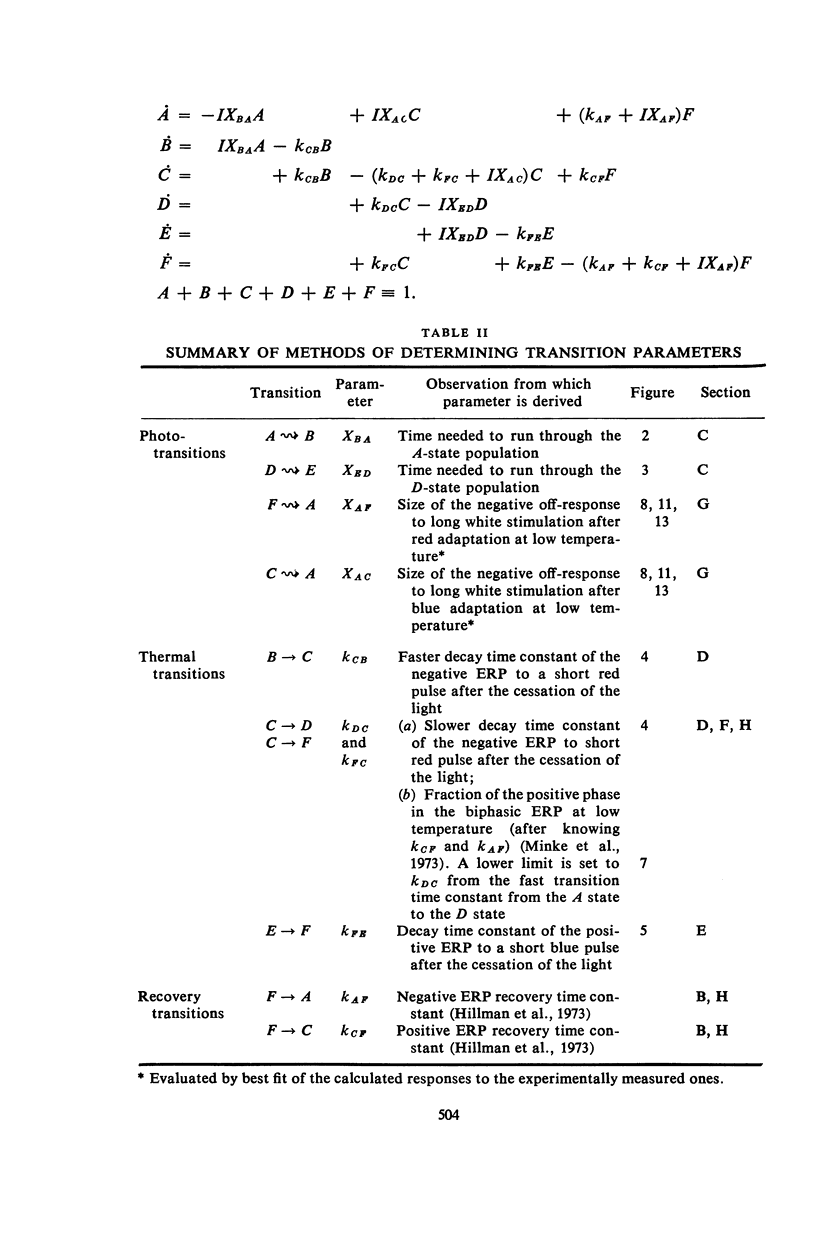
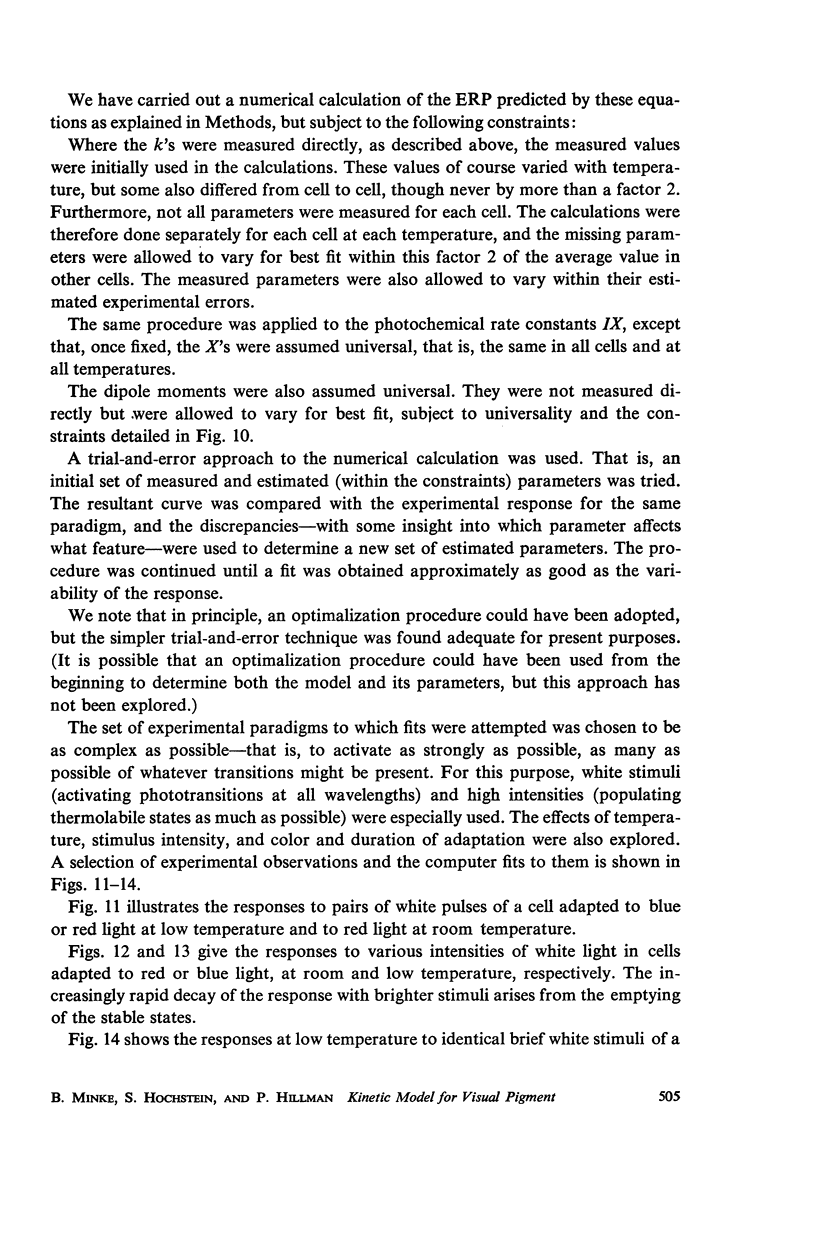
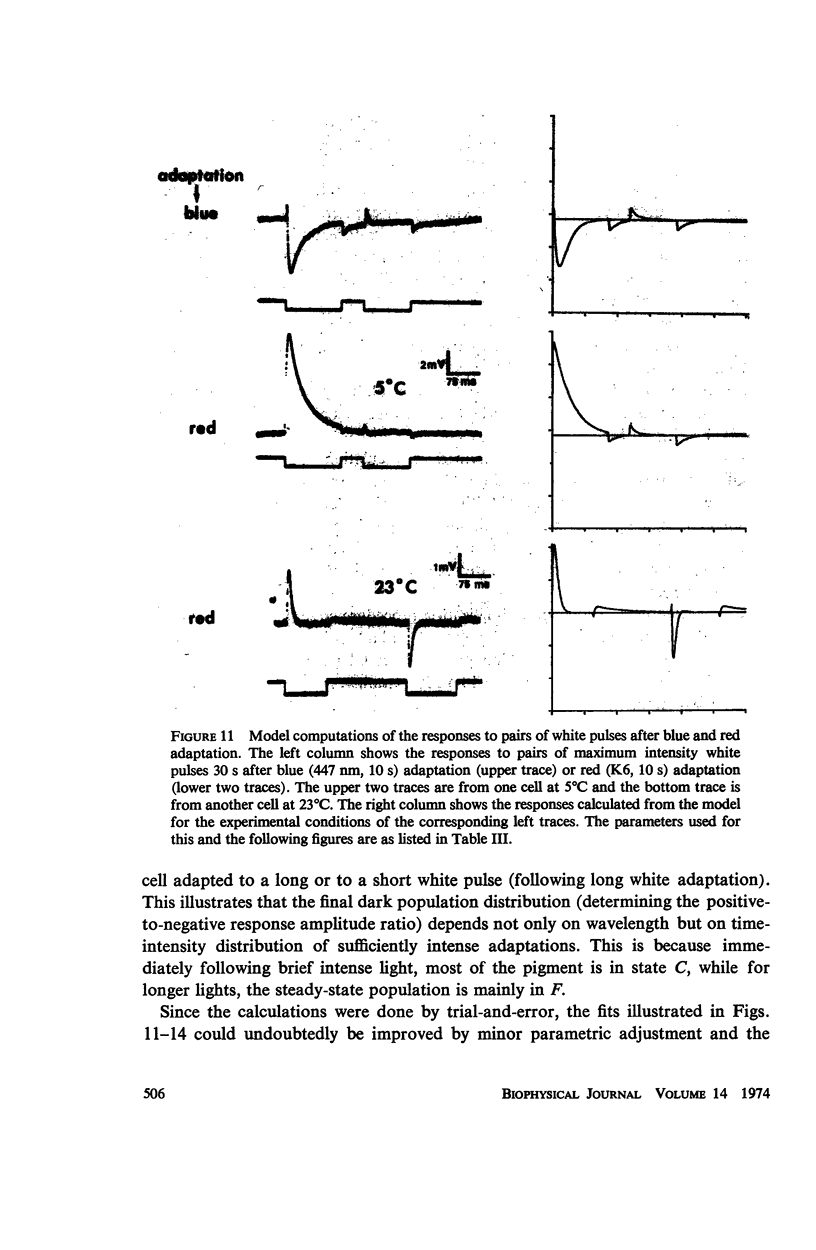

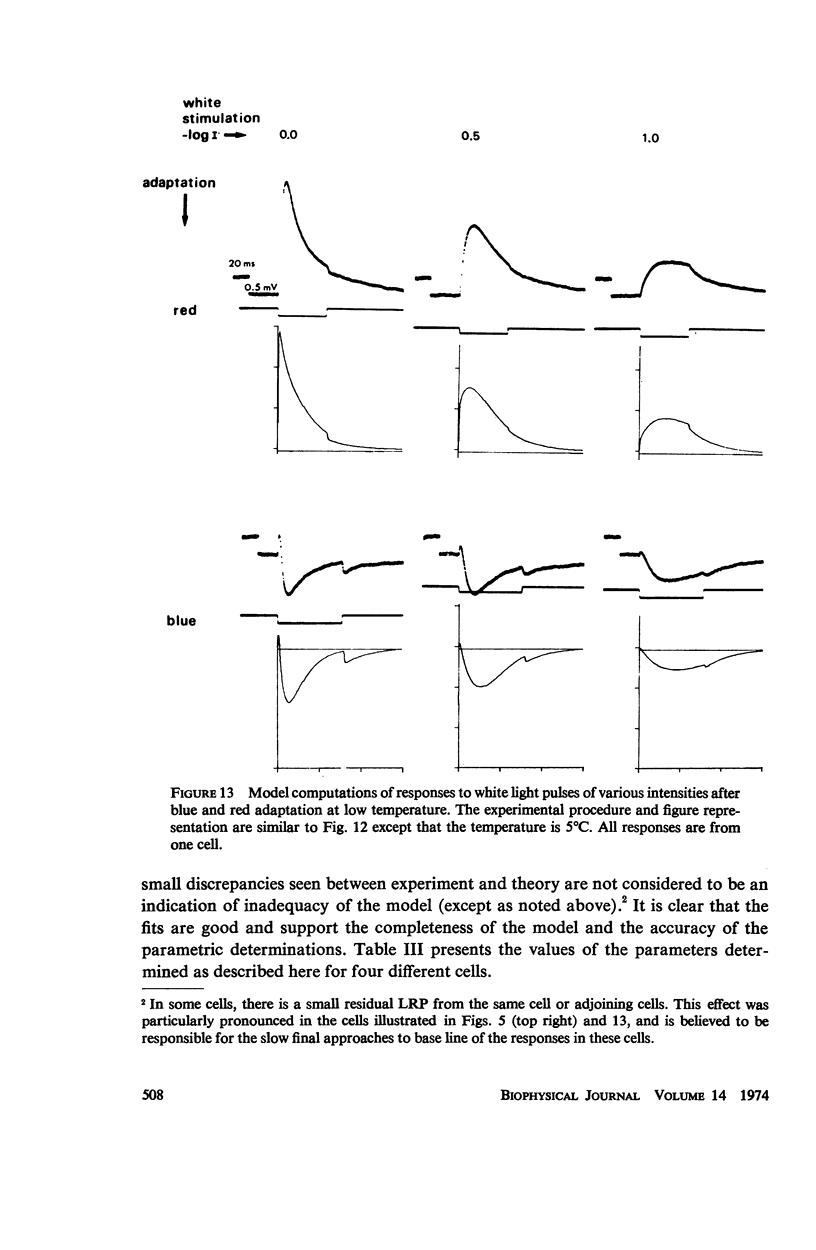
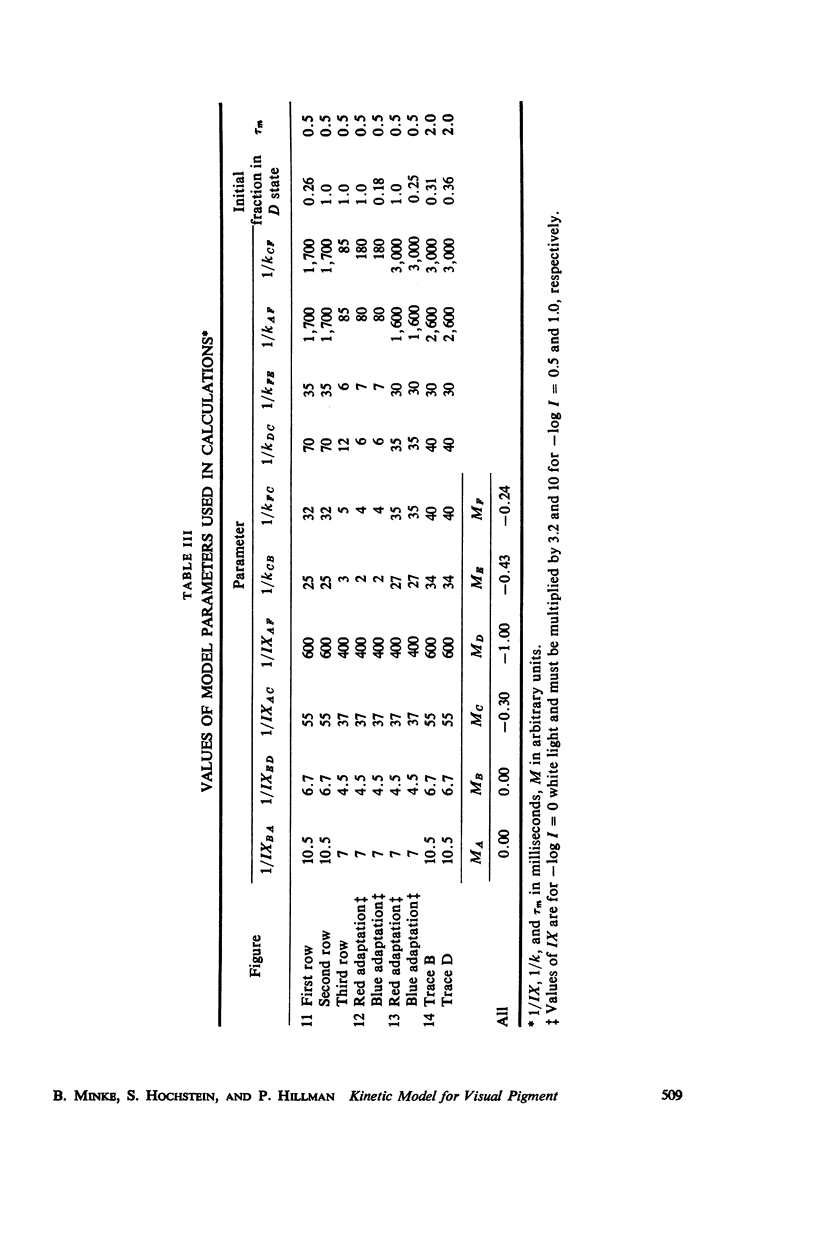
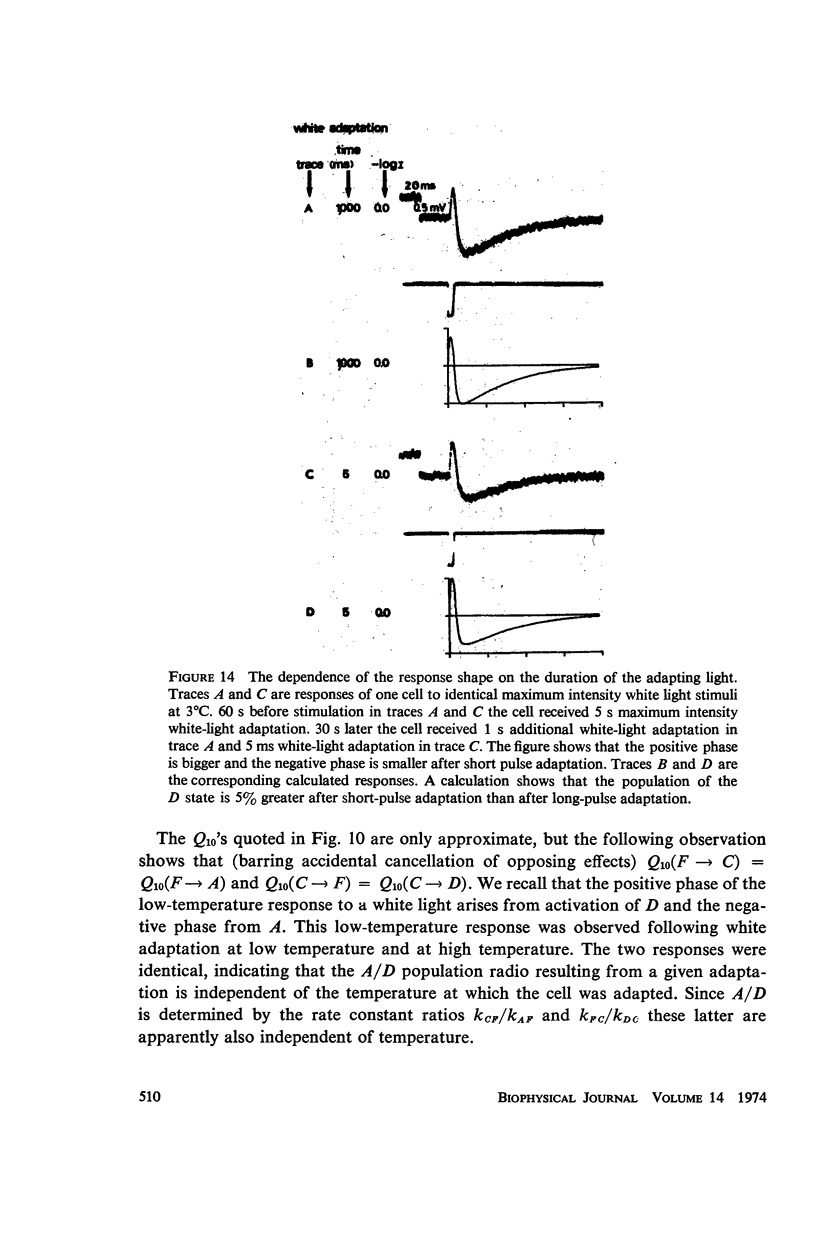
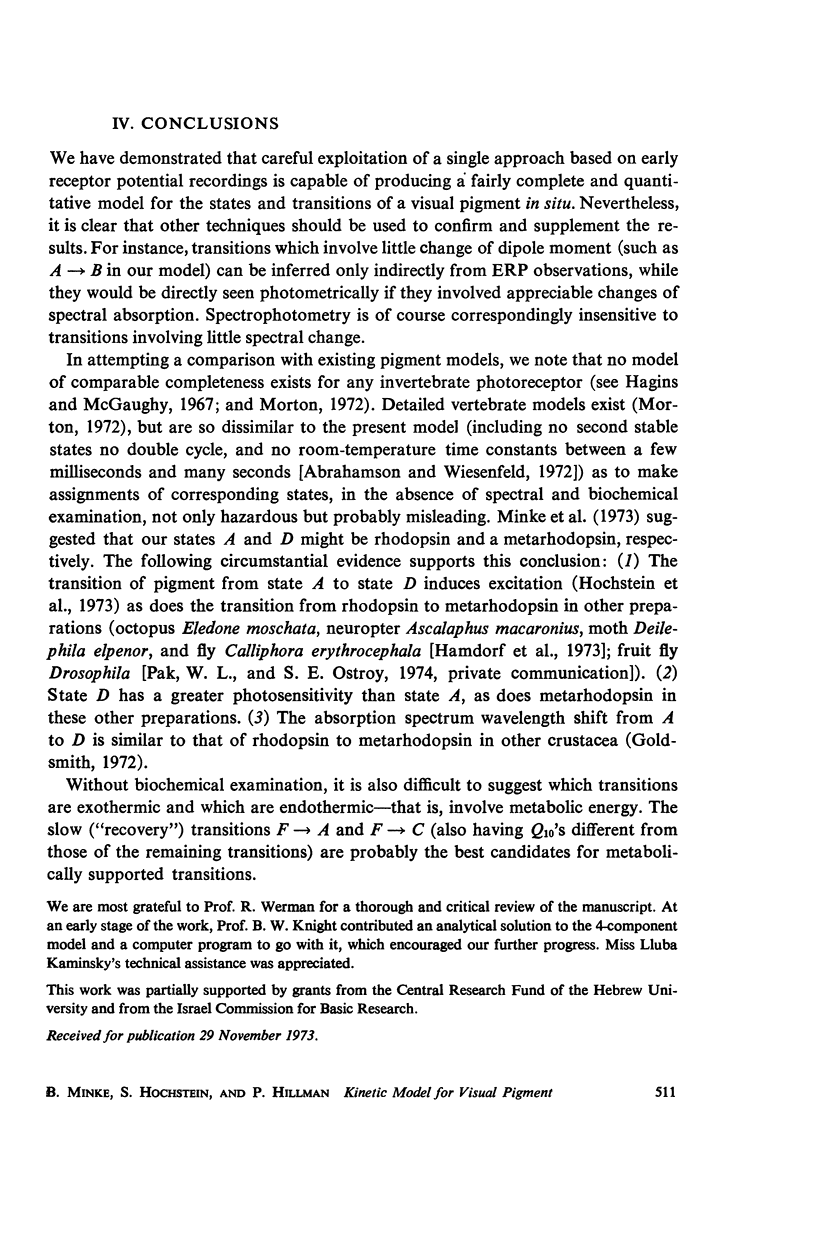
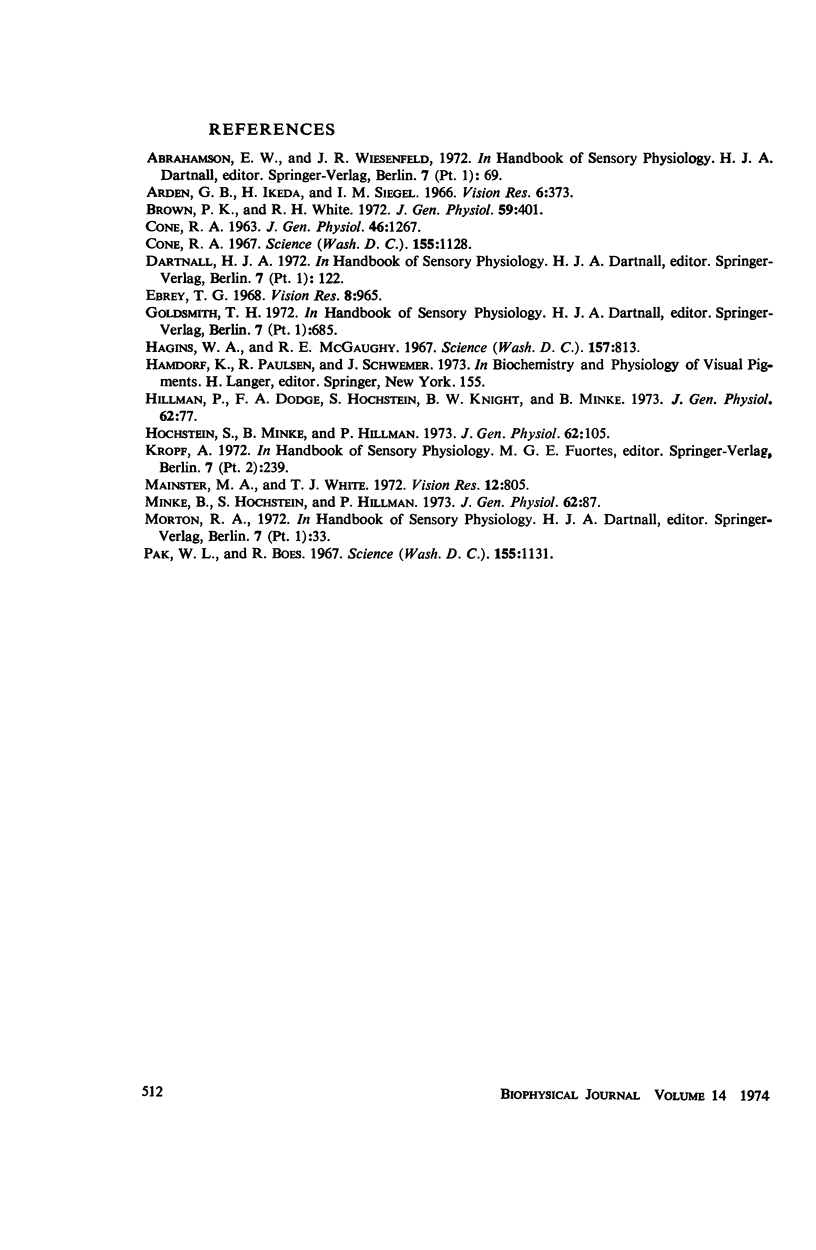
Selected References
These references are in PubMed. This may not be the complete list of references from this article.
- Arden G. B., Ikeda H., Siegel I. M. New components of the mammalian receptor potential and their relation to visual photochemistry. Vision Res. 1966 Aug;6(7):373–384. doi: 10.1016/0042-6989(66)90047-2. [DOI] [PubMed] [Google Scholar]
- Brown P. K., White R. H. Rhodopsin of the larval mosquito. J Gen Physiol. 1972 Apr;59(4):401–414. doi: 10.1085/jgp.59.4.401. [DOI] [PMC free article] [PubMed] [Google Scholar]
- CONE R. A. QUANTUM RELATIONS OF THE RAT ELECTRORETINOGRAM. J Gen Physiol. 1963 Jul;46:1267–1286. doi: 10.1085/jgp.46.6.1267. [DOI] [PMC free article] [PubMed] [Google Scholar]
- Cone R. A. Early receptor potential: photoreversible charge displacement in rhodopsin. Science. 1967 Mar 3;155(3766):1128–1131. doi: 10.1126/science.155.3766.1128. [DOI] [PubMed] [Google Scholar]
- Ebrey T. G. The thermal decay of the intermediates of rhodopsin in situ. Vision Res. 1968 Aug;8(8):965–982. doi: 10.1016/0042-6989(68)90071-0. [DOI] [PubMed] [Google Scholar]
- Hagins W. A., McGaughy R. E. Molecular and thermal origins of fast photoelectric effects in the squid retina. Science. 1967 Aug 18;157(3790):813–816. doi: 10.1126/science.157.3790.813. [DOI] [PubMed] [Google Scholar]
- Hillman P., Dodge F. A., Hochstein S., Knight B. W., Minke B. Rapid dark recovery of the invertebrate early receptor potential. J Gen Physiol. 1973 Jul;62(1):77–86. doi: 10.1085/jgp.62.1.77. [DOI] [PMC free article] [PubMed] [Google Scholar]
- Hochstein S., Minke B., Hillman P. Antagonistic components of the late receptor potential in the barnacle photoreceptor arising from different stages of the pigment process. J Gen Physiol. 1973 Jul;62(1):105–128. doi: 10.1085/jgp.62.1.105. [DOI] [PMC free article] [PubMed] [Google Scholar]
- Mainster M. A., White T. J. Photoproducts of retinal photopigments and visual adaptation. Vision Res. 1972 May;12(5):805–823. doi: 10.1016/0042-6989(72)90007-7. [DOI] [PubMed] [Google Scholar]
- Minke B., Hochstein S., Hillman P. Early receptor potential evidence for the existence of two thermally stable states in the barnacle visual pigment. J Gen Physiol. 1973 Jul;62(1):87–104. doi: 10.1085/jgp.62.1.87. [DOI] [PMC free article] [PubMed] [Google Scholar]
- Pak W. L., Boes R. J. Rhodopsin: responses from transient intermediates formed during its bleaching. Science. 1967 Mar 3;155(3766):1131–1133. doi: 10.1126/science.155.3766.1131. [DOI] [PubMed] [Google Scholar]


